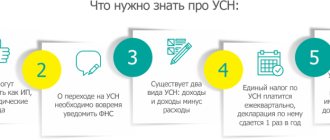In what cases are you threatened with assessment, and what do you need to know in each of them?
The assessment center (hereinafter – AC), like everything Western-progressive, came to our latitudes about 20 years ago. What is characteristic is that there is a lag of 40 years. Legend has it that the technology was born in the bowels of the British Ministry of Defense, was used to evaluate military pilots and took place in a specially equipped brick booth, which was called an “assessment center”. Well, okay, these are lyrics! For us, this is what is more important: AS, despite its high cost and monstrous cumbersomeness, is often used by the most advanced companies for the selection and internal assessment of employees. This means they can come for you too. So let us be fully armed.
First of all, let's define it - what is it? Assessment is a large, complex and all-encompassing procedure for assessing an employee (or candidate), consisting of several diverse tasks: cases, exercises, role-playing games. Part of the assessment may also be an interview—more precisely, an interview based on competencies. Why is it so difficult? Firstly, for greater reliability (validity). Secondly, during the assessment you are assessed on many parameters at once. That's why there are a lot of tasks. For the same reason, AS can last for 6-8 hours straight.
AS in the mass consciousness is associated with some ominous and unpleasant procedure, where your nerves are exhausted, where it is unclear how to behave and where you feel like a complete idiot. Moreover, as a result of all this balancing act, you can be thrown out of work. I will try to dissuade you as best I can by showing the internal logic of the AS - and it exists, and it is really ironclad.
The most important thing: do not perceive AS as a problem. Take it as an adventure, an opportunity to express yourself, to gain new experience. Relax and have fun! After all, there’s nowhere to go anyway, right?
It is unlikely that you will be subject to AS if you are applying for the position of a cashier at Dixie, a courier, a solarium administrator, etc. (By the way, for such cases there are also technologies similar to AS, only much simpler). It is also doubtful that the employer will arrange AC for workers. But if you:
- want to become an intern in a global corporation;
- mid-level manager and are going to become a top (or get into the reserve);
- You are still an advanced specialist and are planning to become a mid-level manager;
- in the near future, foresee a transition from a branch to the corporate center of your company;
- an applicant who gets a job in a decent company - most likely for a managerial position;
- then the AC may well touch you. Of course, in each case it will be designed differently, but the essence of the technology will be the same.
Features of hiring employees in the digital field
In all cases, you need to know one thing: during the AS itself, no one will evaluate your professional knowledge. Agree, even an advanced HR is not strong in the specifics, for example, of horizontal directional drilling. But he is strong in assessing your work behavior - and this is precisely the essence of AS. Here they evaluate not exactly WHAT you can do, but HOW you use your skills, and whether this will be of benefit to the company.
Objectives of the Assessment Center
The assessment center is conducted to determine the professional skills of a specialist. The focus is on testing the practical skills of a specialist in typical production situations. In general, this method helps to cope with the following tasks:
- creation of a personnel reserve;
- recertification of the management team;
- corporate coaching;
- professional adaptation of new specialists in the workplace.
The above was just a sample list, since each organization can set its own tasks within the framework of using AC. The only requirement is compliance with the rights of employees provided for by the Constitution and the Labor Code of the Russian Federation. In addition, it is important to take into account the overall development strategy of the enterprise.
According to statistics, more than 75% use the AC method exclusively for the development of existing personnel. When selecting employees, the results of training at the Assessment Center are not taken into account, or at least are not a priority. Systematic verification of the composition of the organization’s staff ensures high efficiency of the labor process.
A bit of entertaining swearing. How does everything work from the inside?
So, let's take apart the cogs and gears of the AC!
The core of the technology is the so-called competency system. It is different for each company, because it is written for a specific company. One competency is like one of the bricks that together form the so-called profile (or model) of competencies for a separate position. The profile also cannot be the same for everyone - otherwise it loses its meaning - although individual competencies are repeated in the profiles. The profiles for a sales manager and a sales director will be different, because the requirements for them are also different.
Of course, anything can happen in nature. And it happens that the company is limited to one set of competencies for both the CEO and the ordinary manager. My personal opinion is that this is not good, but oh well – let’s just remember that this can also happen.
It could also be that the company is very large, and there is an endless variety of positions in the company. Then, as a rule, the profile is tied to the grade. And then a position of a certain grade begins to automatically correspond to a certain competency profile.
The competencies themselves can be very different, for example: “Customer focus”, “Effective communication”, “Search and analysis of information”, “Stress resistance”, “Strategic thinking”, “Planning and control of activities”, etc. In short, each of them describes your ability to solve a specific group of problems through appropriate work behavior. Competencies usually reflect your abilities
- work with information;
- or communicate with people;
- or setting goals and solving problems.
Once again: separate competence = brick. Competencies compiled in a certain way for a specific position or grade = a separate building made of bricks - you can mentally screw a sign onto it with the name of your position. The entire set (system) of competencies = a warehouse of bricks from which you can build any building).
Further. Each competency has so-called indicators, positive and negative. It is according to them that HR is guided during the assessment process. For example, for the “Effective Communication” competency, the indicator “Confused speech, weak voice, pauses in speech” will be negative. And the indicator “Confident speech, strong voice, absence of unmotivated failures in speech” is, accordingly, positive. Etc.
What does all this have to do with it? But here’s the thing: when preparing for the AS, HR compiles a list of competencies to be assessed. If you, say, are a marketing manager and are applying for the position of marketing director, then you will be assessed on director competencies. If you are a market applicant applying for the position of marketing manager, then you will be assessed according to your managerial profile. They can select all competencies for assessment, or only those that are considered the most important.
What could be there? Anything. If you are a salesperson, then, for example, “Influence skills”, “Stress resistance”, “Result orientation”, “Effective communication”. If you are a marketer, something like “Analytical abilities” and “Innovation” will be added. If you are applying for a top position, your profile will contain competencies that describe your abilities for strategic thinking and decision making.
Now comes the fun part. HR takes your set of competencies and figures out how to evaluate it all using AS tasks. In one task, for example, he will evaluate your “Result Orientation” and “Stress Resistance”, in another - “Analytical Abilities”. A good HR person writes them himself, in consultation with heads of other functions, while a poor HR person copies them from the Internet.
It is the unpredictability of tasks, combined with strict adherence to regulations, that terrifies the person being assessed. Their list, of course, is stored until the start of the AS in a safe in the far corner of the secret bunker.
Assessment center as a method of personnel assessment
The assessment center, as a way of assessing personnel, has its own principles and rules.
Principles
The score should be:
- complex;
- independent;
- unambiguous.
All participants must have equal opportunities to demonstrate their abilities and talents and be under the same conditions.
The assessment is carried out only on the visible behavior of the subjects, without examining internal causes. This allows you to understand exactly what is needed for a correct objective analysis: how an employee acts in a given situation at work, and how high his efficiency is.
Method rules
- It is necessary to eliminate as much as possible factors that may affect the outcome of the test.
- The opportunity for participants to deliberately behave in such a way as to please the expert by anticipating his expectations should be minimized.
- All exercises and tests must contain clear instructions, including: procedure; behavior rules.
- Subjects should not be stopped mid-task to do something else.
Stages of the AC
The assessment center consists of several stages.
I
Drawing up a successful profile necessary for a specific position.
At this stage, experts discuss with managers what competencies the employee should have.
For example, for a middle manager it is:
- impact on personnel;
- self-organization;
- ability to make decisions, etc.
All competencies (this is the ability to solve professional problems) when assessed are represented by a scale with a description.
Each position has its own specific level of competencies that an employee must have in order to be in this position. The stage allows you to determine at what phase of development each of the necessary abilities is in the test subject.
II
Evaluation process.
Several techniques are used here:
- business game;
- interview;
- testing.
A business game is precisely those simulated situations that are the basis of the AC.
Such conditions for assessment may be, for example: negotiations, work to attract clients, management, etc. The game is played in front of specially trained observers.
Game example:
The director of the company encouraged his employees with a bonus and scheduled its delivery for a certain period. But at the time of receipt of funds it turned out to be less than expected. Assignment: you need to choose among the workers who to give a reward and who to refuse. And explain your verdict to those who were left without a bonus.
The managers of one company where a similar game was played explained their decision as follows: they either told those who were left without a bonus that they had not earned it, or that they (the managers) did everything possible, but the superior manager decided in his own way.
The test and interview after simulating business cases make it possible to combine assessments into one whole, and make the resulting result especially accurate.
We are conducting reconnaissance! How to understand what exactly will be expected of you during the assessment
So now we at least know what information to get. Of course, no one from the mentioned secret bunker will give you a list of tasks with a competency assessment scheme. But you can find out about the competency system in your company. If you have a corporate document called “Competency Assessment Procedure,” then take a look at it - everything is there. If there is no such thing, do not hesitate to ask HR directly - what competencies are generally prescribed in our company? What about my position? Where can you see them?
It’s not a fact that they will answer. But you have to try!
Of course, if you are an external candidate, this number will not work. In this case, you can use plan B: look at the list of company values on the website. Nowadays everyone loves to describe values. It is believed that evaluation based on values is the highest level of evaluation. (True, I don’t yet know a single living person who could clearly describe the technology for this assessment). Well, here it is: values, as a rule, are tied to the company’s competency system. This is, as it were, their quintessence, although it is intended for something completely different.
Thus: we look at the list of values and try to understand approximately what competencies they are tied to. Of course, it may turn out to be a finger in the sky, I don’t argue! But again, this is better than doing nothing at all.
So it began. Who are all these people in the office? Why are they looking at me like that?
That very day came, and you found yourself among the other subjects. What will happen to you now? You will be assessed through individual exercises and group discussions.
No matter how banal this thought may seem, the main thing in the speaker system is calmness and restraint. Nobody will bite you. You will no longer jump above your head. Don't be afraid of your colleagues - they themselves are afraid of you now. And AC technology, like an X-ray, will reveal your “development zones,” even if you carefully hide them. However, this also applies to your strengths.
Of course, all of the above is true if this very technology is followed. In an amicable way - just anyone can’t carry out the AS, but only specially trained (for a lot of money) people with certificates, for example, SHL, can. Or other competent providers. If the speaker is real and large-scale, several rooms are occupied by it at once. This is how the organizers parallelize the execution of different tasks. And if everything is organized at a good level, then before the start of the procedure they will honestly tell you what exercises you have to do, what time each of them starts and ends, when is lunch, where are the toilets, etc.
When you come to the right AS, you will immediately notice that there are more evaluators than those being evaluated. And that's okay. According to classical technology, each participant in the AS should be assigned 2 observers (of course, this does not apply to individual tasks for analyzing information). Although in practice, it is no less common to do the opposite - one appraiser is assigned to two appraised people (the appraiser’s qualifications simply must be high enough). What are they doing, you ask?
They record EVERY word you say, that's what. As a rule, “your” appraisers sit so that they can clearly see you - opposite or slightly to the side. The more they write down, the easier it will be for them to process the results later. The essence of their work is the so-called NOKO (“observation, description, classification, evaluation”). That is, when they look at you intently and write mountains of paper, they are not yet evaluating. They will evaluate you later, measuredly and slowly, after they have classified all your statements, checking them with indicators.
For example, we evaluate Vasya Ivanov’s competency “Effective Communication”. Yeah, Vasya Ivanov tried to bleat something 10 times in a row, but no one from the group heard him (fact). This leads to the manifestation of the indicator “Unable to capture and hold the attention of the group” (classification). We put a bold minus (element of evaluation). Then Vasya Ivanov suddenly gave a bright, meaningful, fiery speech, but no one in the group reacted to this again (fact). We put another bold minus on the same indicator (evaluation element). But at the same time - a plus according to the indicator “Expresses his thoughts convincingly, uses a variety of speech techniques” (assessment element). Then, having consistently classified all of Vasino’s behavior in this exercise, we count the pros and cons in a special way (assessment). And we get, for example, a “3” rating for the “Effective Communication” competency. Moving on to the next competency...etc.
This task is methodical, long and painstaking, and ideally requires replacing living assessors with biorobots. The fact is that it is extremely important for the appraiser to distance himself from emotions and value judgments (“Vasya Ivanov is an unbalanced psycho”), and be guided only by facts (“Vasya Ivanov stomped his foot 4 times, mentioned someone’s mother 15 times, climbed onto a table"). Otherwise, no assessment will be possible simply for technical reasons.
Also - in addition to assessors - there may be a special administrator in each office who monitors the regulations. If 20 minutes are allotted for the exercise, then exactly after 20 minutes he will take away all the materials from you and cut off all your discussions mid-sentence. In AS, more than anywhere else, the purity of the experiment is important.
A supervisor may also be present during the procedure to ensure that the procedures are carried out correctly in general. He is usually the most important one there (project manager).
What you can expect at the AC:
- “Individual analytical exercise” is a task where you will virtually resolve a problem. For example, “you are the director of a PR agency, and a dissatisfied client came to you, and the roof leaked in the office and the water was turned off.” You receive a sealed bag with a bunch of pieces of paper. The pieces of paper are laid out in a certain order and imitate incoming input: letters, calls, etc. The goal is to develop an adequate program of action within a strictly allotted time.
- “Analytical presentation” - you are tasked with justifying the choice of something versus something using the data available in the conditions (for example, developing or selling a business, renting or buying buildings, promoting product A or promoting product B..). And then, accordingly, make a short presentation and show it to the appraisers. One of the most stressful tasks for the appraised and one of the most informative for HR

- “Fact finding” - the essence is clear from the name. The appraisers will read a description of the problem to you, and then you can ask them any questions related to this problem. But the appraiser will not tell you everything - he has instructions! Your goal: 1) to get to the bottom of the reasons for the situation, 2) to propose a plan to correct it.
Of course, role-playing games and group discussions stand apart, in which not only the ability to obtain and analyze information, but also the skills of influence, persuasion, etc. are assessed. "interpersonal skills":
- "Role-playing game". You transform into, well, let’s say, a sales director. Your counterpart (one of the appraisers) transforms into your subordinate who came with some problem, or, conversely, whom you want to puzzle with some problem. Or portrays a client, for example. The point is to find a solution within a limited period of time: to convince the interlocutor of something or to obtain certain information. By the way: if you are a manager, your real management style will definitely come out in the role-playing game. You cannot be a dictator and a tyrant in life, but in a role-playing game appear to be a turquoise-agile Scrum master.
- “Group exercise with assigned/unassigned roles”, also known as “group discussion”. The subjects gather in a group, sit at the table and discuss the next simulated situation. In this case, everyone receives a sheet describing their role in the discussion (assigned roles), or everyone receives the same instructions (unassigned roles). The most spectacular and longest part of the AC - it usually lasts about an hour. The funny thing is that 7-8 minutes after the start of the discussion, the participants completely mutate into their “role-playing characters”, and completely forget that they are, in fact, being watched. The meaning is the same - to promote your decision in the group, to come to a collective decision, etc. - depending on the conditions of the exercise.
It is very difficult to give any universal advice like “how to behave correctly on speakers” - this technology is too flexible. But in any case, the following will be true:
- in analytical exercises, strive for maximum objectivity in searches and actions. Twist the situation from all sides: from the position of the client, your boss, your subordinates. What will this situation lead to, where did it come from? Which actions will be prioritized and which ones will be less? Which actions will bring profit, which will require investment..?
- Don't be silent in group discussions. Otherwise, the assessor will give you the letters “n/a” on the score sheet. This is not bad, but not good either - you just haven’t proven yourself in any way, and there is no data about your competencies. But you will immediately lose against those who performed well. A profitable tactic is to speak first after the start of the exercise and take on the role of moderator of the discussion. This always adds 100500 points to your karma, but only if you were able to hold the moderator position until the end of the exercise. On the other hand, it is absolutely not necessary to shout louder than everyone else and attract attention to yourself in every possible way - and why, read below. Look at the group and think in advance - with whom could you create a tactical alliance in this exercise, with whom are you ready to butt heads? Or are you more comfortable defending your position alone?
- in role-playing games everything is individual.
 Just try to look like an adequate manager, client or subordinate. If possible, look like a business-oriented, pro-Western employee.
Just try to look like an adequate manager, client or subordinate. If possible, look like a business-oriented, pro-Western employee.
- For complete clarity, the set of exercises can be supplemented with competency interviews. The assessor will ask you questions related to specific situations, and then classify and evaluate your answers in the same way. For example, he will ask you to tell us how you saved a hopeless project, or achieved outstanding results in something, or resolved a work conflict - depending on what competencies he will evaluate. Therefore, prepare a set of cool stories with a good ending in advance. Be extremely specific in your answers: you are not asked how you “generally” resolve conflicts, you are asked how you acted in one particular situation.
Don't generalize - the assessor will flag this as a "false behavioral example." Avoid passive language: not “the task was completed,” but “I completed the task,” not “the budget was formed,” but “I formed the budget.”
Assessment Center Stages
The assessment center is a lengthy, complex process. It includes the following stages:
- preparation of the assessment center;
- carrying out assessment activities;
- generation of reports;
- feedback on the results of the assessment center.
Assessment activities are discussed in detail earlier in the article. Let's look at the preparation for the assessment center and the final stages.
Preparatory stage
The assessment results directly depend on the preparation of the event. The preparatory process can take from two weeks to 3 months. At the first stage, it is necessary to define assessment goals, develop competency models or update existing ones.
The competency profile is prepared based on the example of successful company employees, as well as the accumulated experience of experts.
In accordance with the ideal model, exercises are developed to identify and assess competencies. Then the assessment center scenario is developed. At the preparatory stage, appraisers from among the employer’s employees are trained. Most often, this role is performed by the head of the company, personnel managers, and the immediate superiors of the employees being evaluated.
Reports and feedback
After the assessment center, experts prepare reports for each participant. The strengths and weaknesses of candidates are assessed. Depending on the purpose of the assessment, recommendations are prepared for the customer.
The results are discussed both with the assessment customer and with all participants. Candidates are provided with assessment results, based on which they can determine areas for further development to develop the necessary competencies. The assessment center is a powerful driver of employee learning. An individual approach guarantees the participants’ interest in advanced training. The expert shows the employee growth areas and hidden reserves.
We offer you to use it when recruiting personnel in St. Petersburg. Extensive experience in the labor market and satisfied clients are our calling card.
How NOT to behave, even if you really want to
Firstly, there is no need, as was said above, to go to extremes - to remain silent or, conversely, to crush everyone around with your verbosity. In any case, this will not have the best effect on the final (integral) assessment.
Secondly. There is no need to show fear, wariness, or disdain towards assessors. I can understand you as a human being, if you, for example, are a stern engineer from Yamal and know everything about the distillation of fuel oil, and in front of you are sitting glamorous girls and boys who have not seen life and are trying to somehow evaluate you. I understand your irony, yes. But girls and boys act according to certain instructions, and your irony can create an unfavorable background for you. Likewise, there is no point in fawning over them.
Third. This, in principle, is approximately the same as the second one, but I will say it anyway, because practice forces me to say it. For God’s sake, don’t burden the assessors with the details of your personal life. Don’t try to put a “human face” on your purely formal communication. If you tell during the exercises how many buckets of cloudberries you picked in the summer at the dacha, how your eldest went to school, how you built a cool bathhouse, this will not help, but rather the opposite.
And finally. 90% of assessors are women. (The author of the article is a rare exception). Accordingly, you should absolutely not have a rumpled appearance, abuse the day before, make discriminatory and sexist statements... In general, there is no need for unnecessary provocations!
How to monetize the results of AS - of course, to your advantage
The results of the AS may also bring benefits for the candidate. In addition to the obvious things (hiring, promotion), you can also get side benefits. The main one is training at the expense of the company. If any of the competencies are “sagging,” this is a reason to go to the boss and HRD with the idea of improving this competency. Bad with “Effective Communication” - ask for public speaking courses. Bad with “Strategic Thinking Skills” - apply for an MBA. It will be difficult to argue with you. You didn’t come with your vague guesses, but with a report in your hands (signed, perhaps, by the same HRD). And your intention to learn is not dictated by concern for personal capital, but solely by the intention to be more useful to the business. In addition: HR, like no one else, is interested in positive resonance from the speaker. Your training will confirm that the AS was not an assessment for the sake of assessment, but a logical and necessary link in an integral business process!
You can make it even cooler. You go to the boss and HRD and say that in order to upgrade sagging competencies, you would like to take on some kind of development project. Which one - it’s better to come up with it in advance, so that it: a) is definitely doable for you, and b) could later serve as a beautiful, weighty line in your resume. (It is unlikely that you will be refused, since in addition to the above arguments, this development project also does not require extra money). This way you will strengthen your corporate reputation and increase your value on the market. But you still need to think about the latter - you won’t be working in your current place until you retire?
In general, if you are going to an assessment, smile and enjoy the adventure! Don't doubt that everything will work out for you! Despite the complexity and unpredictability of the procedure, you always have a chance to influence its result and make this result your next career lift.
kak-proyti-assessment-tsentr-as-s-polzoy-a-glavnoe-s-udovolstviem
Link copied to clipboard






